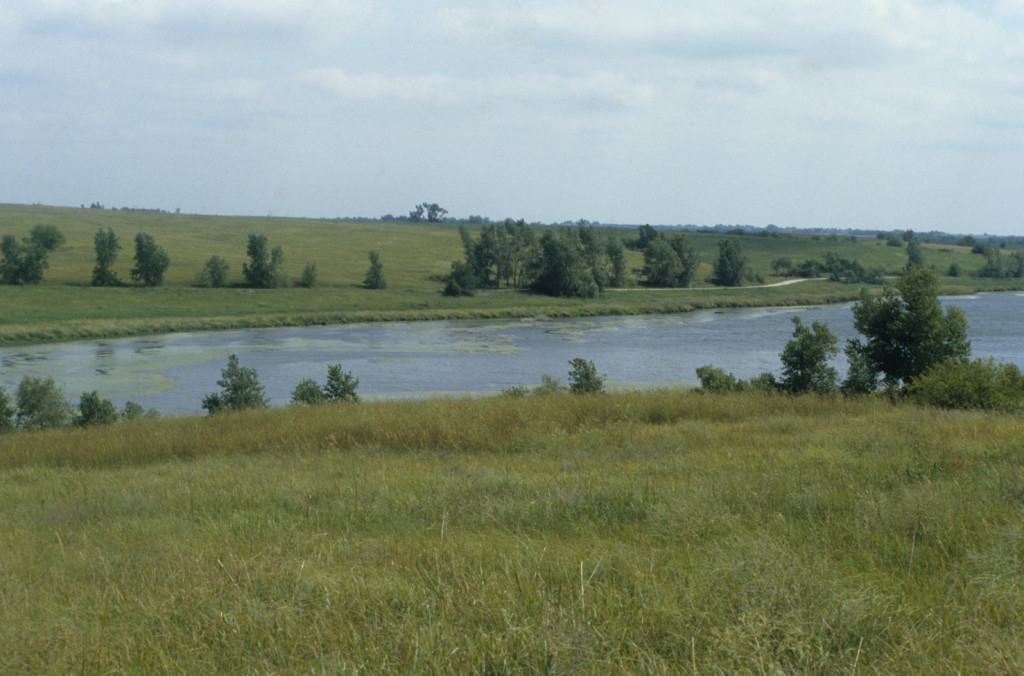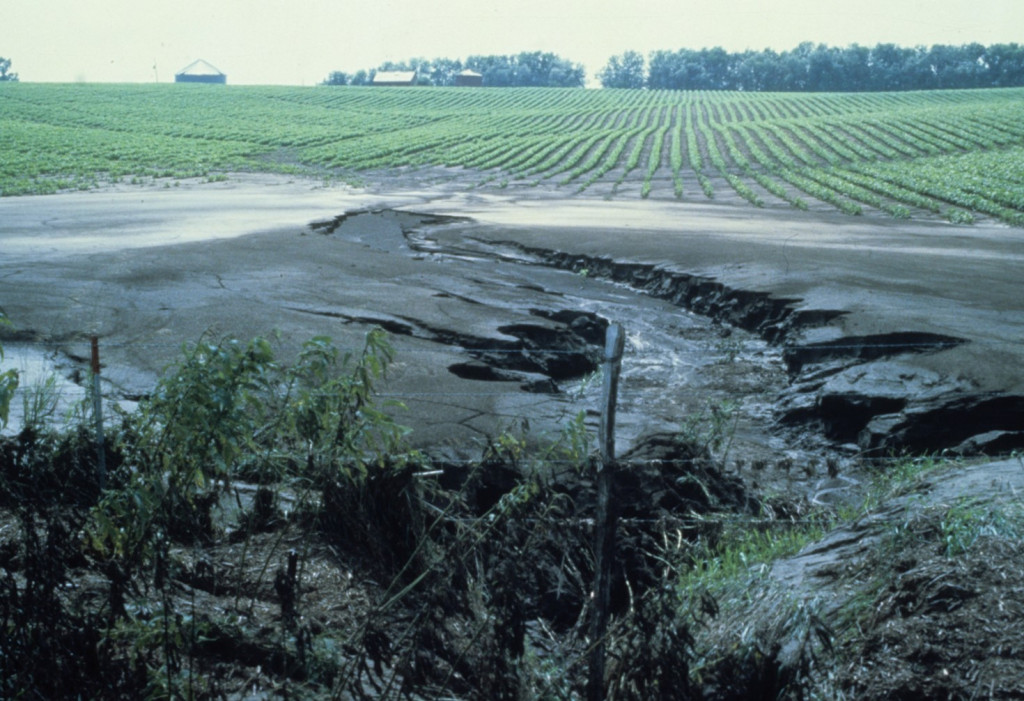It is been a while since I have ventured into hard-core science for one of my blog posts. Time to do it again.
You will notice the big word I used as the title of this post. Unless you have had a limnology class or two, you may not have seen that word. However, if you fish in Nebraska you need to know what it means and understand how it works.
Let me explain. . . . All bodies of standing water, all “lakes” go through an aging process. The big word for that process is “eutrophication”. As they age “lakes” become shallower as they fill with sediment. They also tend to become more fertile. Carried to its ultimate conclusion, eutrophication turns deep, clear “lakes” into shallow, marshy wetlands.
In Canada, on pristine natural lakes created by glaciers, eutrophication can take hundreds, thousands of years. In Nebraska where most of our standing waters, pits, ponds, reservoirs and lakes are man-made, eutrophication happens at a very accelerated rate. This is known as “cultural eutrophication” and is a function of the types of waters, geology, soils, and land use. Many flood control reservoirs in eastern Nebraska were built knowing that within a hundred years over half of their conservation pool would be filled with sediment.
Water quality, form, function, and aquatic biota (living things, plant and animal) of lakes change as they age. Relatively new natural lakes like those in the north woods are deep, have clean water, very little aquatic vegetation, low fertility, and can support fish like lake trout. Those lakes are “oligotrophic”. On the other end of the spectrum, old lakes are relatively shallow, have turbid or stained water, a lot of aquatic vegetation or algae, high fertility, and support fish like largemouth bass and bluegill. Those lakes are “eutrophic”. In between there is a spectrum of waters and stages of aging. “Mesotrophic” would refer to those that are somewhere in the middle, and often are ideal habitats for walleye, smallmouth bass and muskellunge.
In Nebraska, due to the fertility of our soils and land use, there really are no waters that are anything but eutrophic. All of our waters have high levels of nutrients characteristic of eutrophic waters.
However, new reservoirs and newly mined pits in Nebraska can have some characteristics of oligotrophic or mesotrophic waters. They initially tend to have deeper water, steeper drops, no sediment accumulation and little shoreline erosion. Some of them also have sandy substrates that limit the growth of rooted aquatic vegetation. As eutrophication occurs, those pits and reservoirs become shallower as they accumulate sediments and detritus. Shorelines erode and drop offs flatten and disappear. Sediments and organic material settle onto sandy substrates and eventually aquatic vegetation takes root in areas protected from wind and wave action.
The eutrophication process on reservoirs is different than that on natural lakes. Most obviously is the accelerated rate at which it occurs on most reservoirs. Habitat changes are also dramatic as reservoirs age. New reservoirs typically have an abundance of flooded vegetation and trees that provide a pulse in productivity and an abundance of shallow water cover. Species like northern pike, yellow perch, bluegill, black crappie, and largemouth bass thrive in those habitats. However, in a few short years, flooded vegetation and woody habitat decays, and especially in reservoirs with fluctuating water levels, there may be little if any aquatic vegetation to replace that shallow water habitat. Subsequently, the fish community shifts to species that are more successful in open water; walleye, white bass, channel catfish, and perhaps gizzard shad. Regrettably, nuisance and invasive species tend to become more dominant as waters age.
It is very true that a lake is a reflection of its watershed. As I mentioned, in Nebraska our soils tend to be fertile and that is why our waters have no lack of nutrients. Coupled with land use that is dominated by row crops in many watersheds, and the sediment and nutrient inputs coming from the watershed are even higher. On the other hand, eutrophication slows where watersheds are dominated by native grass.
Add it all up, and where does it end? With relatively shallow waters with little change in depths, eroded shorelines, poor water quality including bluegreen algae blooms, and fish communities ultimately dominated by common carp, black bullheads, and who knows what invasive species. In the worse cases, fish die-offs happen periodically. Fishing and recreational opportunities decline or even disappear on waters that would be considered “hypereutrophic”.
Is it hopeless?
What can be done? In an agricultural state like Nebraska, is the passage of time and eutrophication inevitable?
Fortunately, quite a bit can be done. But, let me start by pointing out that some activities are nothing more than “band-aids”. They do nothing to address the real problems.
For example, dumping old busted concrete or rock on an eroded shoreline may seem like a good solution. For a time that may stop erosion, but erosion can start again behind the rock and concrete. Furthermore, concrete or rock provides little habitat in the shallow, soft sediments adjacent to eroded shorelines.
The addition of a variety of man-made brushpiles or “structures” can provide cover and attract fish. However, fish attractors do nothing to address underlying water quality and productivity issues, and it is nearly impossible to add enough fish attractors to produce a measurable improvement in fish populations.
Who does not love fish stocking? Stocking programs can successfully achieve many fisheries management objectives. However, stocking fish does not address poor water quality and deteriorating habitat.
No, real solutions are not that easy, nor that inexpensive. That is one of the main reasons why Nebraska’s Aquatic Habitat Program began in 1997–to provide real solutions to eutrophication of lakes, reservoirs, pits and ponds.
Watershed improvements are hugely important to reservoirs. The challenge is that almost all land in those watersheds is privately-owned. The Nebraska Game & Parks Commission does not own those watersheds and cannot dictate what landowners do on their lands. Programs are available through partner state and federal agencies to encourage land owners to incorporate soil conservation practices, and we do work to encourage participation in those programs.
We would like to wave a wand and make things happen in watersheds. But, we cannot. Should we throw up our arms and quit? No, that makes things more challenging, but not impossible. Where we can do something is within the basin of the waterbody and on the adjacent property.
On some waters, mostly pits, alum treatments have been used. There is water chemistry behind the alum treatments. Alum binds with nutrients and “seals” them onto the bottom. Pits have been the best candidates for alum treatments. Sealed nutrients should stay on the bottom in those waters for a long period of time.
Full Aquatic Habitat Rehabilitation projects have incorporated a number of techniques to turn the clock back on eutrophication. A variety of breakwaters have been installed to protect shorelines and reclaim shallow water habitats. Ideally, rooted aquatic vegetation re-invades those areas and provides some of the best fish habitat possible.
Sediment-nutrient dikes have been installed. Where waters enter reservoirs, those dikes trap sediments and nutrients before they enter the main body of the reservoir.

Simple excavation is a good way to remove accumulated sediments and nutrients. Digging out reservoir bottoms also restores diversity in depths and drop-offs, edges.
Just the simple act of lowering water levels, or where possible draining a waterbody, sets back eutrophication. Drying sediments compact and nutrient levels decline. Exposed bottom sediments are extremely fertile and grow all kinds of weeds, cockleburs, willows and cottonwoods. When re-flooded that terrestrial vegetation re-creates a new reservoir habitat, a habitat that is extremely productive for several species of fish.
Chemical renovations remove unwanted species of fish, including species that contribute to eutrophication and poor water quality. As a matter of fact, following renovations, water quality improves almost overnight. Re-stocking of desirable sport fish follows a renovation, and this also turns back eutrophication. Fish grow fast and good fishing returns relatively soon on renovated waters. On some waters, periodic renovations are an important management tool to keep turning back eutrophication and maintain quality fishing.
Yes, all of this and more costs money, significant amounts of money. Twenty-some years ago Nebraska anglers felt it was important enough to dedicate a funding source for aquatic habitat. Since then eutrophication has been turned back on waters all over Nebraska. We will continue doing our best to address the real problems and what causes them. If we did not, one day we could all be fishing for bullheads and common carp. Not that there is anything wrong with those species, they are worthy of pursuit, but almost all of us would agree we want a little bit more. So we will keep fighting eutrophication.
The post Eutrophication appeared first on Nebraskaland Magazine.





















